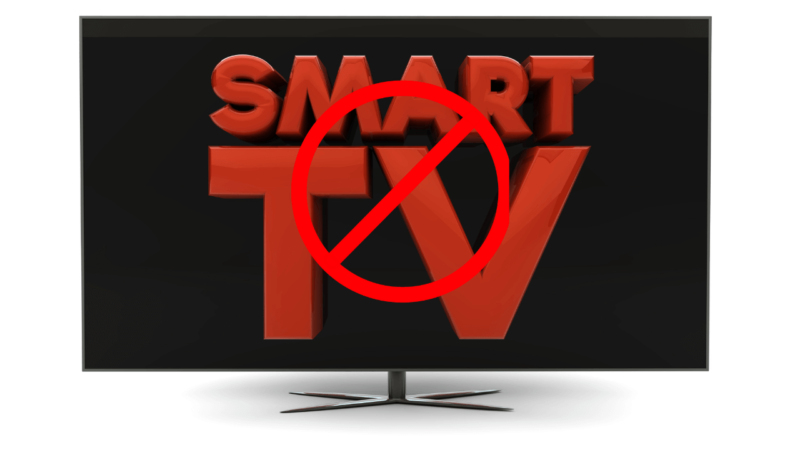If you’ve landed here, you’re likely frustrated because your Philips TV won’t turn on—an issue that can be both confusing and inconvenient. Don’t worry, you’re not alone. Power issues are among the most common complaints Philips TV owners face, but many causes have straightforward solutions. This comprehensive guide breaks down every possible reason, from simple fixes to advanced troubleshooting, helping you get your TV back up and running quickly.
Why Does My Philips TV Won’t Turn On?
There are multiple reasons why a Philips TV might refuse to power up, ranging from minor inconveniences like a faulty remote battery to serious hardware failures. Understanding these causes will help you troubleshoot effectively:
- Power source problems: Unplugged cable, faulty wall outlet, or bad power strip
- Remote control failure: Dead batteries or malfunction
- Internal hardware faults: Power supply board, mainboard, capacitors
- Software or firmware glitches: Corrupt system files or failed updates
- External device conflicts: HDMI-CEC or other connected devices interfering
- Environmental causes: Power surges, overheating, physical damage
By pinpointing the exact cause, you can decide whether a DIY fix is possible or professional repair is necessary.
Read Also: Philips TV Remote Not Working
Common Symptoms When Philips TV Fails to Power On
Recognizing your TV’s symptoms can narrow down the problem. Here are the typical signs of Philips TV power issues:
- No power at all: No LED lights, no sound, no picture
- Power LED blinks but TV won’t start: Often indicates hardware or firmware issues
- TV turns on, but screen stays black or blank
- TV powers off immediately after turning on
- Remote control not responding or TV only works with manual power button
If your TV shows any of these signs, this guide will help you troubleshoot step-by-step.
Understanding How Philips TVs Handle Power
Philips TVs use a combination of power supply boards, main logic boards, and firmware controls to manage power and startup functions. Here’s a quick overview:
- Power Supply Board: Converts AC mains electricity to the DC voltages required by the TV’s components. It’s often the most vulnerable hardware part.
- Mainboard: Controls the TV’s software, inputs, display, and other functions.
- Capacitors & Fuses: Stabilize and protect the circuit; failures here can prevent startup.
- Firmware: Software that controls the boot process and system stability.
Failure in any of these components can cause the TV not to power on.
Preliminary Checks Before You Start Troubleshooting
Before diving into complex repairs, always rule out simple fixes:
- Check the power outlet: Plug another device to verify it works.
- Inspect the power cable: Look for damage or loose connections.
- Avoid power strips or surge protectors temporarily: Plug the TV directly into a known working outlet.
- Test the remote batteries: Replace with fresh ones.
- Use the physical power button on the TV: Remote issues can sometimes confuse the diagnosis.
- Look for blinking or steady LED light: Note its color and pattern for error code references.
Step-by-Step Troubleshooting to Fix Philips TV Power Issues
1. Perform a Hard Reset
- Unplug the TV power cable from the wall outlet.
- Press and hold the TV’s power button (not the remote) for 20-30 seconds.
- Plug the TV back in and try turning it on.
This resets internal circuits and clears residual charge.
2. Check Power Cable and Outlet
- Replace the power cable with a known good one if possible.
- Try a different wall outlet or room.
3. Reset the TV Firmware
- If the TV powers on but doesn’t display, try a factory reset via the settings menu or manual reset button (check your model’s manual).
4. Disconnect External Devices
- Unplug all HDMI, USB, and other connected devices.
- Power on the TV to rule out conflicts.
5. Test the Remote and Power Button
- If the TV turns on with the physical button but not remote, replace the remote or check IR sensor.
6. Check for Visible Hardware Damage
- Open the back panel (only if you’re experienced and warranty expired).
- Look for bulging capacitors or burnt components on the power supply board.
Power Supply Board: The Heart of the Issue
Most power problems stem from the power supply board. Here’s what to know:
- Symptoms of Power Board Failure: No LED lights, flickering screen, or TV shutting off suddenly.
- Common Faults: Blown fuses, failed capacitors, or damaged transformers.
- How to Test: Use a multimeter to check voltages and fuse continuity (requires technical skills).
- Repair or Replace: Replacing the entire power board is often easier and safer than repairing individual components.
Important: Always unplug the TV and discharge capacitors before working inside.
Internal Hardware Problems and How to Spot Them
Other internal parts may cause power issues:
- Mainboard failure: TV may not boot or show error lights.
- Capacitors: Look swollen or leaking; cause instability.
- Fuse: Blown fuse prevents power flow; easily tested and replaced.
- Loose internal connectors: Can cause intermittent power problems.
If you spot any damage or smell burnt electronics, professional repair is recommended.
Remote Control Problems: Is Your Remote the Culprit?
Sometimes the problem isn’t the TV but the remote:
- Replace the batteries with new alkaline ones.
- Check IR sensor by pointing your phone camera at the remote while pressing buttons—IR light should flash.
- Try manual power button on the TV itself.
- Reset or pair the remote if your model supports Bluetooth.
If the TV works with the manual button but not the remote, replace or repair the remote control.
Software Glitches and Firmware Fixes
Firmware issues can cause startup failure or frozen screens:
- Check for firmware updates from Philips official website or through TV settings.
- Factory reset clears corrupted data but deletes personalized settings.
- Unplug the TV for 10 minutes to clear temporary software bugs.
- Some models allow USB firmware reinstallation.
If unsure, check Philips support for model-specific firmware instructions.
External Devices Causing Power Problems
Connected devices can trigger power problems via HDMI-CEC or faults:
- Disconnect all external devices such as gaming consoles, streaming sticks, soundbars.
- Power on the TV without any devices connected.
- If TV works, reconnect devices one by one to identify the culprit.
Disable HDMI-CEC in settings to prevent remote power conflicts.
Power Surges and Environmental Factors
Power surges from storms or faulty wiring can damage TVs:
- Use a surge protector or UPS to safeguard your TV.
- After a surge, unplug the TV for 30 minutes before retrying.
- Inspect for physical damage or scorch marks on cables and boards.
When to Call a Professional
Some signs require expert repair:
- TV shows blinking error codes but won’t start.
- Visible hardware damage or burnt smell.
- You lack tools or confidence to open the TV safely.
- TV is under warranty — contact Philips authorized service.
- Complex firmware recovery needed.
Authorized Philips service centers provide genuine parts and certified repairs.
Preventative Tips to Avoid Future Power Issues
Keep your Philips TV healthy with these tips:
- Use a surge protector at all times.
- Keep the TV ventilated to avoid overheating.
- Perform regular firmware updates.
- Avoid plugging/unplugging the TV repeatedly in short intervals.
- Turn off the TV properly instead of unplugging abruptly.
Read Also: IPTV on Hisense TV
Cost Estimates for Repairing Philips TV Power Problems
Typical repair costs vary by issue:
| Repair Type | Estimated Cost (USD) |
|---|---|
| Power Supply Board Replacement | $60 – $150 |
| Mainboard Replacement | $100 – $250 |
| Remote Control Replacement | $15 – $40 |
| Firmware Update / Software Fix | Usually free or minimal cost |
| Professional Diagnostic Service | $50 – $100 |
Sometimes, if repair costs exceed 50% of a new TV, replacement may be a better option.
Philips TV Won’t Turn On FAQs
Q: Why does my Philips TV show a blinking red light but won’t turn on?
Blinking red lights usually indicate hardware faults such as power supply or mainboard failure. Count the blinks and consult your TV’s manual or Philips support for error code meanings.
Q: How can I reset my Philips TV if it won’t turn on?
Unplug the TV, press and hold the power button on the TV itself for 20-30 seconds, then plug back in. This hard reset often clears minor issues.
Q: Is it safe to open my Philips TV to fix power issues myself?
Only if you have electronics repair experience and follow safety precautions. TVs hold high voltage capacitors that can shock even when unplugged. When in doubt, contact professionals.
Q: How long do Philips TVs usually last before needing repairs?
On average, Philips TVs last 7-10 years with proper care. Power supply boards and capacitors often fail after 5-7 years.
Q: Can power surges permanently damage my Philips TV?
Yes. Power surges can damage sensitive electronics irreparably, especially the power supply board. Always use surge protectors.
Q: What does it mean when the TV turns on but the screen is blank?
This can mean backlight failure, software crash, or HDMI input issues. Try toggling inputs or resetting firmware.
Q: How do I know if the remote is causing the issue?
Try turning the TV on with the physical power button. If it works, the remote is likely faulty or has dead batteries.
Conclusion
A Philips TV that won’t turn on can be frustrating, but in most cases, the issue can be diagnosed and resolved with some simple troubleshooting steps. From checking your power source and remote control to inspecting internal hardware like the power supply board, many solutions are within reach for the savvy user. Remember to always start with basic checks such as power cables and outlets before moving on to more technical fixes.



![How to Access Paramount Plus On LG TV [2025 Guide] 9 How-to-Access-Paramount-Plus-On-LG-TV-[2024-Guide]](https://smarttvmaster.com/wp-content/uploads/2024/05/How-to-Access-Paramount-Plus-On-LG-TV-2024-Guide-380x250.png)
![How to Set Up Sleep Timer On Roku [4 Easy Methods] 10 [4-Easy-Methods]-To-Set-Up-Sleep-Timer-On-Roku](https://smarttvmaster.com/wp-content/uploads/2024/04/4-Easy-Methods-To-Set-Up-Sleep-Timer-On-Roku-380x250.png)
![Where is the Hisense TV Power Button [Step-By-Step Guide] 11 Where-is-the-Hisense-TV-Power-Button-[Step-By-Step-Guide]](https://smarttvmaster.com/wp-content/uploads/2024/03/Where-is-the-Hisense-TV-Power-Button-Step-By-Step-Guide-380x250.png)
![[10 Methods] To Fix Vizio TV Won't Connect to Wifi 12 [10-Methods]-To-Fix-Vizio-TV-Won't-Connect-to-Wifi](https://smarttvmaster.com/wp-content/uploads/2024/04/10-Methods-To-Fix-Vizio-TV-Wont-Connect-to-Wifi-380x250.png)